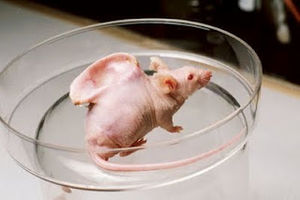Five children in China born with misshapen ears have successfully regrown them using cells taken from their own bodies, in a groundbreaking experiment.
Using a revolutionary process to grow body parts in a laboratory out of cells, researchers were able to give the children new ears to replace their underdeveloped ones, Newsweek reports. The children all had a condition called microtia, which causes ears in newborns to come out small and malformed.
The researchers first took a computed tomography imaging scan of each child’s normal ear. The image was reversed and 3D-printed, and a mold of the printed ear was then filled with a biodegradable material that could eventually dissolve harmlessly into the human body. This mold served as support for cartilage cells from the child that were added in, allowing the cells to grow on their own.
As the cartilage cells divided, the scaffolding dissolved, forcing the cells into the shape of a normal ear. The regrown ear was grafted under each child’s skin, which had been expanded to make room for the organ, making it a lab-made ear ready for use.
So far, results have been successful. The first patient to undergo the procedure had her ear implanted two and a half years ago, and has not reported any problems. The other four children who received their ears recently also did not complain of anything.
This procedure is based on a famous experiment of growing ears on the backs of mice around 20 years ago.
Researchers in Boston set out to create human body parts, beginning with ears. They made ear-shaped scaffoldings, added cow cartilage cells to them, and grafted them on the backs of mice.
Joseph Vacanti, a doctor at the Harvard Stem Cell Institute, was among the pioneers of this experiment, and a photo of a mouse with an ear on its back became an icon for scientific advancement. It was later nicknamed the Vacanti Mouse. A senior author on this new procedure was also a part of the previous experiment, Vacanti said.
The study was published in EBioMedicine.
























